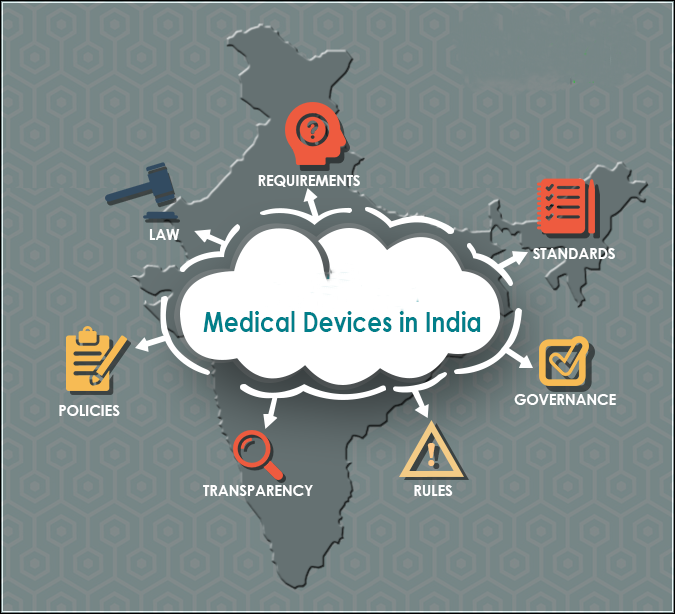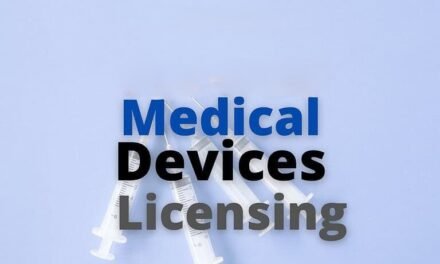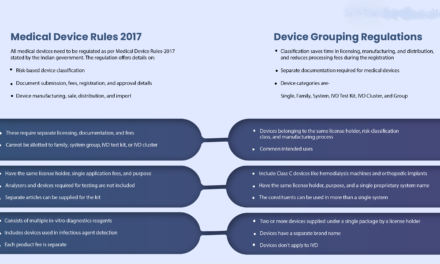
What are the initiatives taken and development of the medical devices sector by the government of India?

The Government of India has implemented several initiatives to foster the growth and development of the medical devices sector, aiming to increase domestic production, reduce dependency on imports, and position India as a global leader in medical device manufacturing. These initiatives are part of India’s broader vision to strengthen its healthcare infrastructure, increase access to affordable healthcare, and promote innovation in medical technologies. Below are the key initiatives taken by the Indian government:
1. Production Linked Incentive (PLI) Scheme for Medical Devices:
- Launch: The PLI Scheme for the medical devices sector was introduced in 2020 as part of India’s Atma Nirbhar Bharat (Self-Reliant India) initiative.
- Objective: The primary objective of the scheme is to incentivize domestic production of medical devices and reduce the country’s reliance on imports, particularly for critical medical devices such as surgical instruments, diagnostic devices, prosthetics, and implantable devices.
- Details:
- The PLI scheme offers financial incentives to companies that manufacture medical devices domestically, covering a range of medical device products.
- It targets an investment of INR 3,420 crore over the next five years to boost the production of high-demand medical devices.
- The scheme aims to attract investments from both domestic and foreign companies and provide employment opportunities in the medical device sector.
2. Medical Devices Parks:
- The government has focused on setting up medical device parks to create infrastructure that supports the manufacturing and export of medical devices.
- KINFRA Medical Devices Park (Kochi, Kerala): One of the most prominent initiatives, this park offers specialized infrastructure, access to skilled labor, and government support to promote medical device manufacturing.
- Other states such as Uttarakhand, Madhya Pradesh, and Himachal Pradesh are also developing similar parks to promote the medical device manufacturing ecosystem.
- These parks aim to create an environment conducive to innovation, reduce the cost of production, and foster collaboration between startups, manufacturers, and research institutions.
3. National Policy on Medical Devices:
- Launch: The National Policy on Medical Devices was introduced in 2017 to provide a comprehensive framework for the growth of the medical device sector.
- Key Focus Areas:
- Promote manufacturing in India and reduce dependency on imports.
- Encourage R&D, innovation, and capacity building in the sector.
- Establish standards and regulatory frameworks for product safety, efficacy, and quality.
- Support skilling and training for the workforce in the medical device industry.
- Outcomes: The policy aims to make India a global hub for medical devices by improving the regulatory environment, product standards, and trade opportunities.
4. Indian Medical Device Regulatory Framework:
- Medical Device Rules, 2017: The Medical Device Rules were notified by the Central Drugs Standard Control Organization (CDSCO) to regulate the manufacturing, import, sale, and distribution of medical devices in India.
- The rules introduce a risk-based classification system for medical devices (low, medium, high risk) and outline regulatory requirements for product approval, clinical trials, and post-market surveillance.
- These rules help establish a clear regulatory pathway for medical device companies and ensure patient safety and product quality.
- Centralized Registration: The government introduced a centralized registration system for medical devices, easing the process of regulatory approval for domestic and foreign manufacturers.
5. Atal Innovation Mission (AIM):
- Objective: AIM, launched by the NITI Aayog, aims to foster innovation and entrepreneurship in India, including the medical device sector.
- Support for Startups: Under this initiative, the government encourages the development of healthcare startups by providing mentorship, funding, and access to incubators.
- Startup India: The Startup India initiative also includes support for medical technology and biomedical startups, helping them access funding, mentoring, and technology commercialization opportunities.
6. Foreign Direct Investment (FDI) Policy:
- FDI in Medical Devices: The Indian government has allowed 100% foreign direct investment (FDI) under the automatic route for medical device manufacturing, encouraging global companies to invest in India.
- This policy aims to bring in foreign capital, advanced technologies, and global expertise to the medical device sector, promoting innovation and enhancing production capacity.
- In addition, the Make in India campaign encourages foreign companies to establish manufacturing units in India, helping to create jobs and improve export potential.
7. Research & Development (R&D) and Innovation:
- Technology Development Board (TDB): The TDB promotes technology innovation by providing financial assistance to Indian companies developing innovative medical devices and healthcare technologies.
- DST and DBT Initiatives: The Department of Science and Technology (DST) and the Department of Biotechnology (DBT) are supporting R&D in areas such as biomedical engineering, medical robotics, and diagnostic technology through grants and funding programs.
- Public-Private Partnerships (PPP): The government fosters collaborations between industry and academia to drive R&D, especially in developing affordable medical technologies for the Indian and global markets.
8. Incentives for Export Promotion:
- The government is also focused on enhancing the export potential of Indian medical devices. It offers subsidies and export incentives for medical device manufacturers to reach international markets.
- India is increasingly becoming a major exporter of medical devices, with the government facilitating trade agreements, participation in global expos, and offering assistance to companies in obtaining international certifications.
9. National Biotechnology Development Strategy:
- Under the National Biotechnology Development Strategy (2015-2020), the government has focused on promoting biomedical technologies and biotech medical devices. The government plans to develop the country into a global leader in biotechnology and bio-pharmaceuticals, which are key components of the medical device ecosystem.
10. National Health Stack and Digital Health Initiatives:
- Digital Health: The Indian government has been pushing for the integration of digital technologies into the healthcare sector, and this includes the development of digital health solutions, telemedicine platforms, and health information systems.
- The National Health Stack initiative aims to build a robust digital infrastructure to support healthcare innovation, including the use of AI, IoT, and data analytics in medical devices.
- National Telemedicine Guidelines have been introduced to regulate telehealth services, which require medical devices to be interoperable with digital platforms.
11. Capacity Building and Skill Development:
- Skilling Programs: The National Skill Development Corporation (NSDC) and other institutions are actively involved in training programs for the workforce in the medical device sector. These programs focus on developing skills in biomedical engineering, manufacturing, maintenance, and quality control.
- The government is working with industry bodies and educational institutions to create specialized training programs for the medical device industry, ensuring that India has a skilled workforce capable of meeting global standards.
12. Increased Focus on Healthcare Accessibility:
- The government has introduced several healthcare initiatives such as Ayushman Bharat (National Health Protection Scheme) and the Pradhan Mantri Jan Arogya Yojana (PMJAY), which aim to make medical devices more accessible and affordable to the population, especially in rural areas.
- These initiatives are expected to increase the demand for affordable medical devices, which, in turn, will drive the growth of the domestic manufacturing sector.
The Government of India’s initiatives for the medical devices sector focus on self-reliance, innovation, regulatory improvements, and export promotion. By encouraging domestic manufacturing, R&D investments, FDI, and international certifications, the government is aiming to make India a major player in the global medical device market. With the combined efforts of industry, regulatory bodies, and academic institutions, India’s medical device sector is poised for significant growth, ensuring better healthcare access and affordable solutions for both domestic and international markets.



























